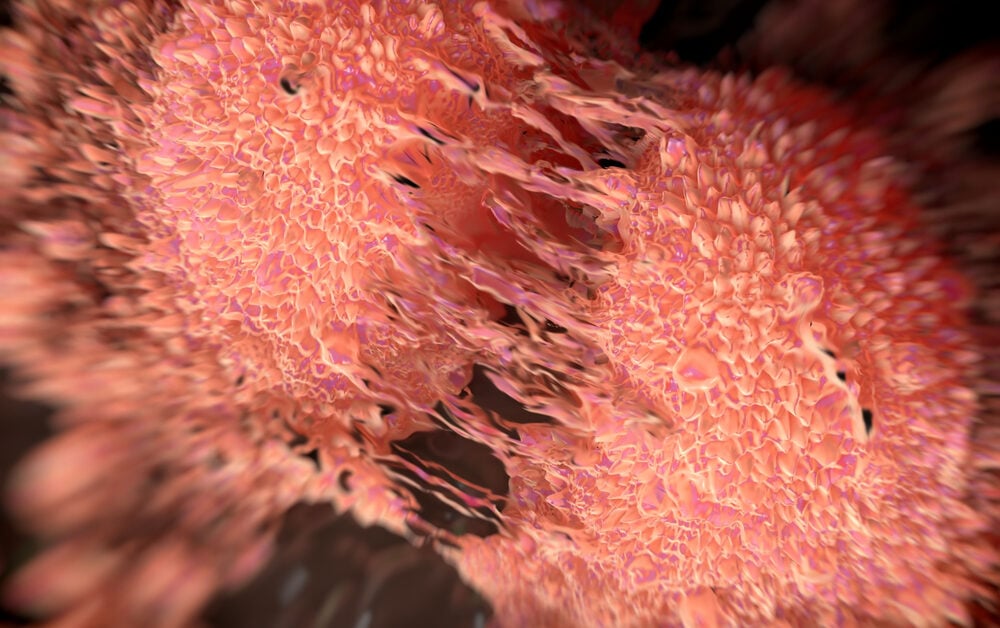Owkin, NanoString Technologies and cancer research institutions University of Pittsburgh, Gustave Roussy, Lausanne University Hospital, Uniklinikum Erlangen/Friedrich-Alexander- Universität Erlangen-Nürnberg, and Charité – Universitätsmedizin Berlin are launching MOSAIC (Multi Omic Spatial Atlas In Cancer) at the American Society of Clinical Oncology’s annual meeting.
MOSAIC is a $50 million project to revolutionize cancer research through the use of spatial omics, a set of technologies that offer information on the structure of tumors.
Spatial omics allows researchers to examine tumors at a near single-cell resolution, while revealing the location and molecular activity of tumor and immune cells. It provides a detailed map of molecular interactions, allowing scientists to decipher key relationships between a tumor and its environment.
By generating and analyzing spatial omics data in combination with multimodal patient data and artificial intelligence, MOSAIC aims to unlock the next wave of treatments for some of the most difficult-to-treat cancers.
New field in oncology research
The first initiative of its kind using spatial omics technology, Owkin said MOSAIC holds the potential to open a new field in oncology treatment research. Owkin will invest $50 million to build MOSAIC. It will use 7,000 tumor samples from patients, making it more than 100 times larger than any existing spatial omics datasets. Owkin and the MOSAIC partners will mine this resource for immune-oncology disease subtypes in pursuit of biomarkers and novel therapies.
Thomas Clozel, co-founder, and CEO of Owkin, said: “The convergence of spatial omics, multimodal patient data, and AI will power the next revolution in oncology research, unlocking the next wave of breakthrough treatments for patients. MOSAIC will help us, and our partners make unprecedented breakthroughs in the fight against cancer.”
Brad Gray, president and CEO of NanoString, said: “This project holds potential to transform our understanding of cancer biology and spark the development of novel diagnostics and therapeutics. It is an unprecedented collaboration, bringing together NanoString’s powerful spatial biology platforms, the highest quality clinically annotated cancer samples from top cancer research centers, and Owkin’s extraordinary A.I. technology and analytics.”
Robert Ferris, associate vice chancellor for cancer research and Hillman Professor of Oncology at the University of Pittsburgh School of Medicine and director of UPMC Hillman Cancer Center, said: “The University of Pittsburgh is excited to be a part of the MOSAIC consortia, which will leverage our UPMC Hillman Cancer Center spatial-omic expertise in understanding cancer cells in their environment. We are enthusiastic to work with other universities and industry partners to uncover actionable insights to detect, treat, and prevent cancer.”
What is spatial omics?
Spatially resolved molecular profiling (also known as spatial omics), recognized as Method of the Year by Nature Methods, is an advanced group of technologies for quantifying and localizing molecular expression that offers scientists a view of tumor structures at near single-cell resolution, revealing interactions between tumor and non-tumor cells.
By measuring a molecule’s expression and mapping it back to its location within the tumor sample, spatial omics allows researchers to ‘zoom in’ on tumor heterogeneity, cell-cell communication, and tumor-immune system interactions. This innovative approach is set to catalyze unprecedented scientific breakthroughs and transform our fundamental understanding of disease mechanisms.
How MOSAIC works
Following the analysis of patient data from research centers using NanoString’s spatial omics technology, combined with RNA-seq, proteomics, histology and other medical data, Owkin will develop a data platform and use machine learning, including deep neural networks, to uncover novel cancer biology and potential therapies.
MOSAIC will initially focus on multiple cancers with unmet medical needs, including non-small cell lung cancer, triple-negative breast cancer, diffuse large B cell lymphoma, ovarian cancer, glioblastoma, mesothelioma, and bladder cancer. After an initial research period, MOSAIC and its standardized data generation and analysis methods will be made accessible to the global biomedical community, further propelling advancements in oncology research.
MOSAIC’s scale significantly surpasses existing spatial omics studies. Previous efforts are too small by two orders of magnitude to drive breakthroughs. Presently, most studies involving these data modalities are constrained by sample sizes, typically fewer than 50. In contrast, MOSAIC will analyze data from 7,000 patients, enabling scientists to conduct research on data cohorts that are 100 times larger than currently possible.
Partnering 2030: The Biotech Perspective 2023






